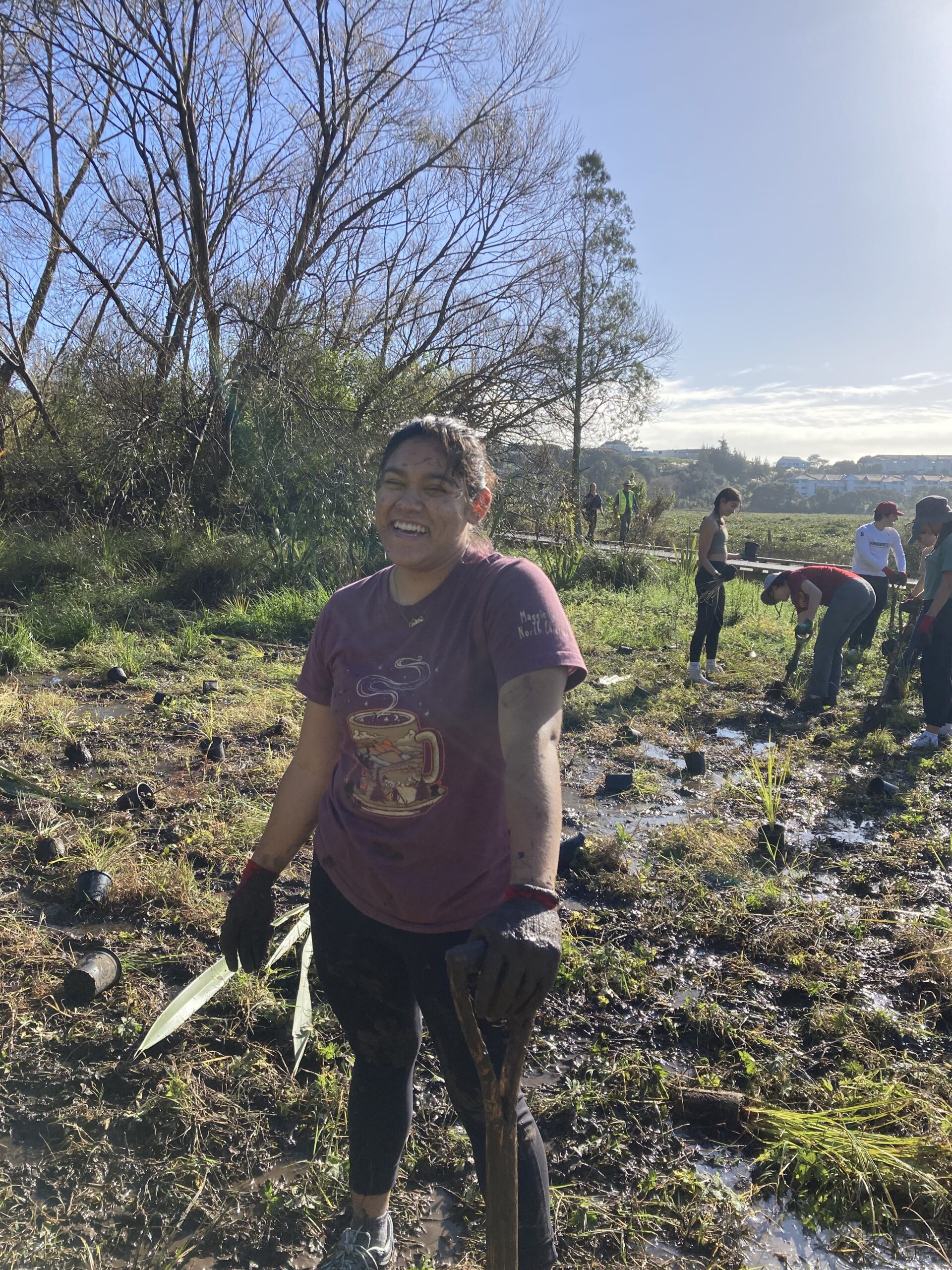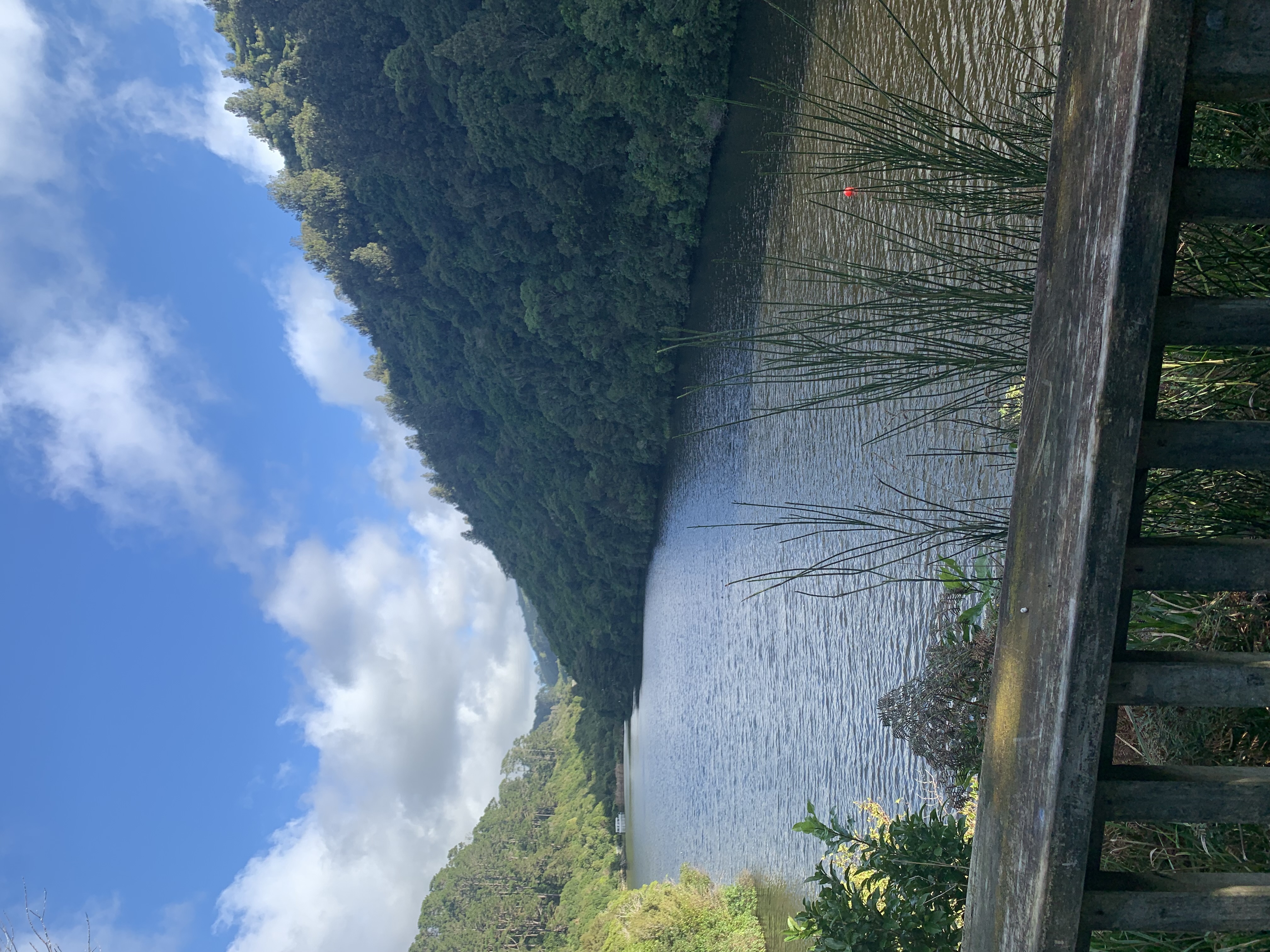
Growing in New Zealand to Become More Eco-friendly!
Throughout my time in New Zealand, I had the privilege of diving head first into the learning of their environmental preservation and protection priorities. One of the things that was important to me when coming to NZ was the abundance of care and awareness for the flora and fauna in the country. Being from the states where environmental concern isn’t of great priority, I wanted to be immersed in a nation where environmental conservation is a given, so that I could then take back what I learn. I witnessed this immediately after landing here. Going through customs at the airport was one of the most in-depth searches I have ever experienced. The customs card I filled out on the plane asked me to declare not only any universal dangerous items, but also any food, animal products, plants (especially that of nuts and seeds), hiking boots and gear, etc. At first I did not understand why all of this information was necessary, but as I started to live here and adapt, it became so glaringly obvious. New Zealand is extremely dedicated to protecting its biodiversity. Any insects that could be caught in your hiking gear, any products or plants that could contain non-native species, etc. can be hazardous to the agriculture and wildlife that is established and/or endangered.
I also saw this continuously on any hike I took, island I visited, and when entering Zealandia, NZ’s largest ecosanctuary. The purpose is to make sure any insects from one region of NZ does not make their way to another if it is not supposed to be there and may disturb the peace. Usually, right before the climb/entrance, there would be a station to sanitize and scrub your shoes. It felt weird to get sprayed with sanitizer but it did make my shoes shiny, it did feel good knowing that any dirt I had contracted that may contain foreign insects would not be entering a new environment, and the scenery was always worth it. No wonder New Zealand has some of the most beautiful landscapes in the world (no matter where you look).
Now, even before I arrived in New Zealand, I started receiving emails from the University of Auckland introducing a couple of the clubs they have. One of which being a program called “Generation Changemaker”. The organization focuses on climate action and innovation for study abroad students. There were multiple workshops and club expeditions. Unfortunately, I was not able to join the club because by the time I went to sign up, all of the limited slots had been filled. However, I have some good friends who were involved in the org and told me that it was ridiculously amazing! One of the events was a competition of sorts where the group to come up with the best plan for action won a mini trophy. I am proud to say that some of the students from my IFSA program brought home the gold with a system in which current students leave behind the reusable resources we accumulated but cannot take back home and leave them behind for incoming students. Not only does it limit waste, but it helps students who may not have the ability to get the supplies themselves. I know I would have loved a system like this when I came in. Despite me not being in the org, I was so thrilled to know there was such a thing- a chance for study abroad students to learn and grow in our sustainability journey.
Though I was unable to participate in Generation Changemaker, I did have the privilege of getting involved in other ways. Throughout my stay in NZ, IFSA has been very generous with the events and adventures they have planned for us. One of the ones that I will always cherish is planting trees and plants with the Kaipatiki Volunteers. I woke up in the early morning and when we got to the location was told that we were tasked with planting over 100 trees. My jaw nearly hit the floor because I did not think that would be achievable in the four hours we were given, but I was determined to do what I could in that time. To keep a long story short, we ended up completely the project in about an hour and a half! By the end of our time there, I was covered head to toe in mud and sweat, and absolutely loved it. It took me back to when I would play outside digging up holes and getting dirty in nature. I was completely shocked that it took less than half the time we were given. But in retrospect, there were about 30 of us working in groups of two to three, so a little over 100 trees is quite simple. It’s amazing what you can get done with a group of people all driven towards the same goal. Afterwards, there were refreshments and I was able to talk to other people who had experience volunteering with Kaipatiki. They told me about some other opportunities, and I definitely took advantage. It was kind of surreal. Whenever I go back home from college, I always see a new lot of trees uprooted and destroyed to make way for new unnecessary luxury homes. It was really beautiful to be a part of a group whose purpose is giving back that agricultural life and supporting its growth.
One more thing I learned on this topic while being here is that nothing will ever be enough. I have spoken to many kiwis and complimented them on their beautiful country. And almost every time, the response is “Thank you, but…” with a description of how it can be better. Its wild to think that even one of the most beautiful ecologically preserved countries can be better. But it can. There is always room for improvement and its amazing to see kiwis adamant that improvement is possible. I hope to bring back that optimism and determination in my own life.
All this to say, I feel so fortunate to have been able to experience what a world in which sustainable resources and ecological awareness matters. I feel like I have definitely grown in my eco-friendly lifestyle journey. I feel like the term “reduce, reuse, recycle” was always thrown around when I was growing up, but I never learned how to do such a thing and there were no systems in place to support that. Even worse, no one really cared to take the time to take sustainable and preservative measures. I had to learn on my own, and I didn’t start until I was in high school, able to understand that there was a problem, and that I want to do something about it. And even now, I revert back to old ways. I hope and will work to remember and continue the practices I have learned here. I want to work towards a more sustainable world and I thank New Zealand for giving me a taste of what that might look like.

